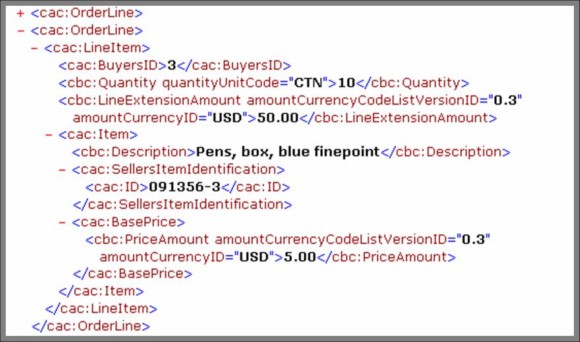What is XML? |
1. As shown in the example below, systems insert “tags” into data streams to indicate
what data fields are included and where each begins and ends in the
data stream. These XML tags enhance the “portability” of data by making the data more “self-describing”
to receiving systems and, if human intervention is needed, to those developing
or debugging interface processes. These tags, for example, make it obvious
where item "description" can be found. 2. In this fragment of an order for office supplies, for illustrative purposes the XML tags are in red, while the "payload" information concerning what is being ordered is shown in black. This order fragment employs the UBL (universal business language) draft standard offered by OASIS and you can see the complete example at the UBL draft spec page. 3. Tools to implement and exploit XML are low-cost and nearly ubiquitious. Neither the sender - in this example a person ordering some pens - nor the receiver would normally see any of the tags. 4. Besides using XML to "self-describe" the payload data, additional tags are inserted to represent overall document organization, "enveloping," and other "data about the data" description needed to implement system to system transport and handoff. |
Explanatory Note: In this sample, PO line item product identification begins (and ends) with the tag "ItemID." ItemID itself includes two subsidiary tags: supplier part number and an "auxiliary" extension of part number XML may incorporate by reference content standards - e.g., UNSPSC is a United Nations commodity classification scheme |
